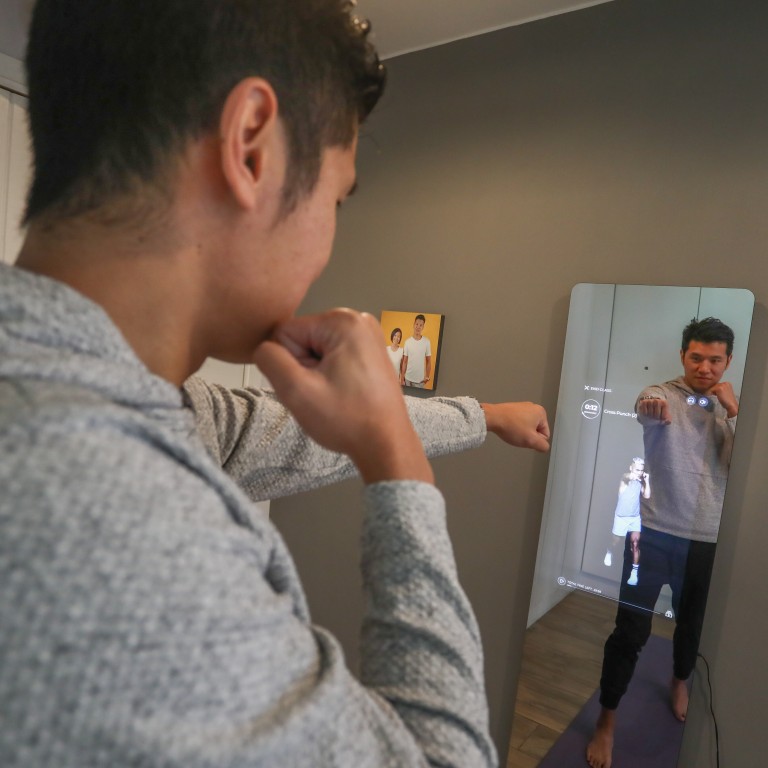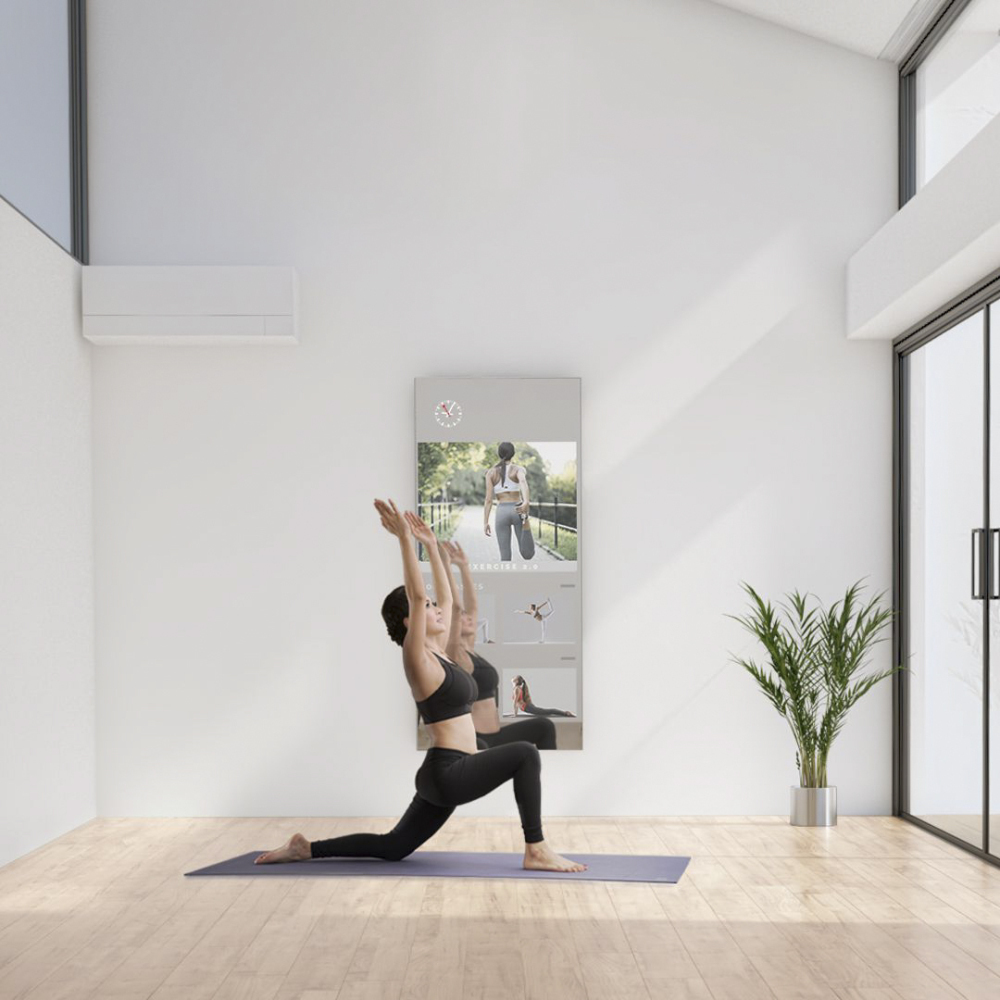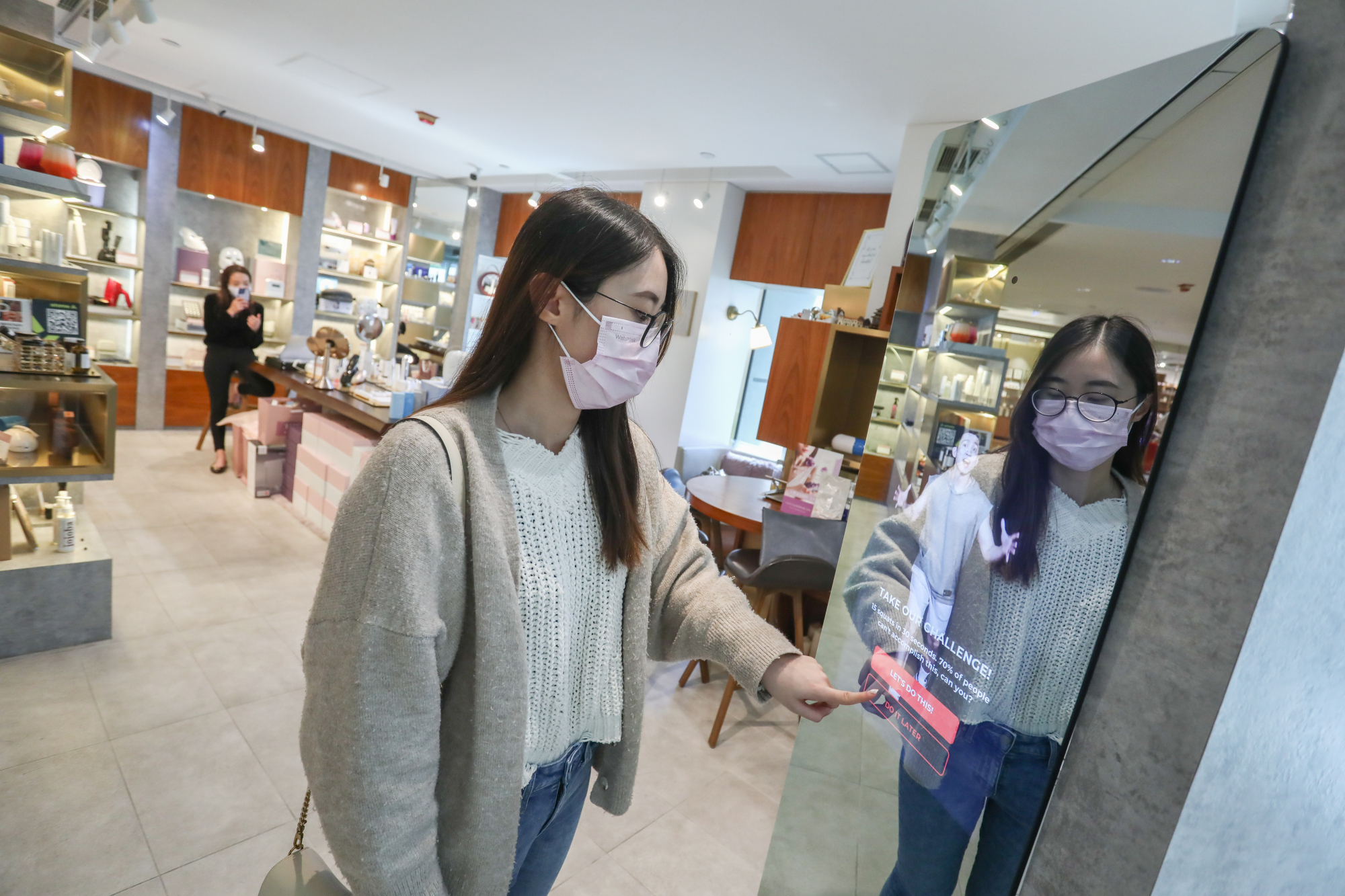
Fitness mirrors: we try the Kara Mirror, with classes including yoga, Pilates, kick-boxing and core
- The Kara Mirror, which retails for HK$12,500 (US$1,600), provides classes in English and Cantonese
- Janice Ng, an ambassador for sportswear retailer Lululemon, was among the first batch of trainers to film content for the mirror
I’m standing in front of a full-length mirror in a hotel room which has had the bed and furnishings ripped out and replaced with a treadmill, weights and a large fitness ball. I wasn’t especially excited about using precious staycation time to work out in a temporary gym, but when the Four Seasons Hotel concierge mentioned a “fitness mirror” I was intrigued.
I rather boldly select a 30-minute high-intensity workout and, after a quick scan that detects 17 key body points – including head, arms, knees, hips and ankles – I’m joined on the screen by an energetic woman in purple leggings.
After a quick warm-up, we’re doing lunges and jumping jacks together. She seems so in tune with what I’m doing (“Let’s take a water break,” she says when I’m flagging) that it’s easy to forget that it’s a preprogrammed workout and she’s not really in the room.
“The AI will learn – the more you work out the more it knows and will give you recommendations based on how well you do,” says Keith Rumjahn, the 36-year-old CEO and founder of OliveX, which makes the Kara Mirror. “Interactive fitness is about taking all your boring traditional machines like the bike and the treadmill and putting a screen on it with a live instructor and music. You can have the group fitness experience in your home.”
The tech-loving basketball coach (he wrote Coaching from the Base Up) and entrepreneur says the idea for the Kara Mirror came because having a career, a commute and two young kids at home meant he could no longer get to a Saturday group class.
“I wanted something I could do at home. And what’s the most-used piece of gym equipment? The mirror,” says Rumjahn, who grew up in Hong Kong, went to South Island School and then university in the US, and returned in 2007.
What is Ayurveda? History, treatments, doshas explained
The mirror was two years in development and came out at the end of 2019. The timing could not have been more perfect. When the coronavirus pandemic hit, it forced people to work from home, gyms to close, and many to spend long spells in home quarantine – all factors which made a home workout even more attractive.
“The Christmas holiday, New Year resolutions and Covid meant there was huge demand and we sold out over Christmas, but we are back in stock now,” Rumjahn says.
The Kara Mirror retails for HK$12,500 (US$1,600), which includes the mirror, stand and 12 months of content. The only other fitness mirror currently available in Hong Kong is the Qaio Flex mirror, which costs from HK$14,699 to HK$42,619 depending on the size and, unlike the Kara Mirror, pairs with free fitness apps.

The manufacturer of the Qaio Flex is based in California and ships to Hong Kong through an agent, while the Kara is based in Hong Kong and creates classes in both English and Cantonese.
“We have got a lot of the really popular local coaches onboard, including a number from [wellness centre] Fivelements,” Rumjahn says.
Janice Ng, an ambassador for sportswear retailer Lululemon best known for her intense ab workouts, was among the first batch of trainers to film content for the Kara Mirror. She says the demand has picked up and she’s now shooting once a week for the mirror.
“It lets people work out at any time of day and, unlike watching on YouTube, there are no distractions like ads, and you can’t fast-forward the content. I also like how the mirror allows people to check and correct their form,” Ng says.

Last summer, Lululemon put its weight behind the fitness mirror trend when it invested US$500 million to buy the Vancouver-based home-fitness company Mirror. Launched in 2018, this was the first fitness mirror on the market and streams live or on-demand classes with world-class fitness trainers from companies such as Nike. It is currently available only in North America.
Rumjahn has seen a surge in demand for the Kara Mirror over the last year and expects the appeal will remain strong even after the pandemic is over and gyms reopen. He compares the shift with video gaming, where users used to sit side-by-side to play and now play online remotely.
“We are trying to gamify fitness,” he says.

He sees many families buying the mirror, with mum and dad picking their own workouts and increasingly the kids using it, too.
“During Covid, the kids’ yoga programme became the second most popular. Kids are stuck at home, they need to move around, so we’re adding a lot more content for them,” Rumjahn says.
Those concerned about privacy can rest easy. The mirror’s camera doesn’t record the person working out; it simply extracts data from 17 points on the user’s body. The AI doesn’t send any data to the server, but analyses on the device, and a physical button on the side of the mirror turns it off, to protect the app from hackers.

In Hong Kong’s notoriously small apartments, where installing a fitness bike would usually require sacrificing the sofa, the mirror has some obvious advantages. Of the broad fitness categories it covers, which includes Pilates and core, barre, kick-boxing, yoga and meditation, core is the most popular.
“People are becoming fitness omnivores – they want to run on a Monday, do Pilates on a Tuesday and yoga on a Wednesday, and the mirror allows you to do all those things,” Rumjahn says.

